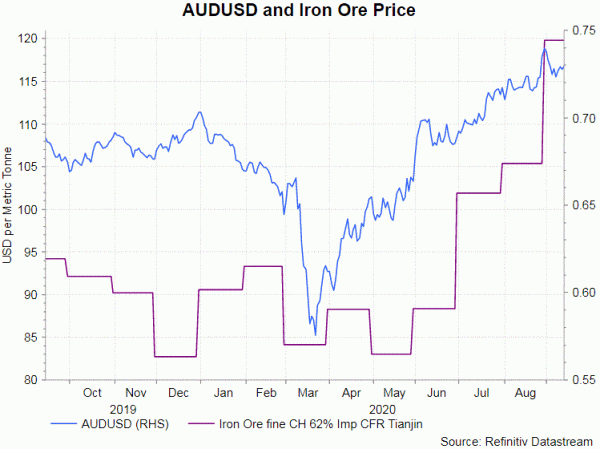RBA minutes for the September meeting contained little new information. The members highlighted uncertainty of the economic outlook with lockdowns in Victoria would likely derail Australia’s recovery. Australian dollar is climbing higher at the time of writing this report. However, we believe it is not driven by the minutes but stronger macroeconomic data in China, Australia’s largest trading partner.
On the monetary policy stance, the minutes affirmed the commitment to “maintain highly accommodative settings as long as required and to continue to consider how further monetary measures could support the recovery”. At the meeting, RBA announced to increase the size of the Term Funding Facility (TFF) to AUD 200B. The facility is also extended to June 30, 2021, from September 30, 2020. The members noted in the minutes that “this would help keep interest rates low for borrowers and support the provision of credit by providing ADIs greater confidence about their continued access to low-cost funding”.
Despite strength of Australian dollar over the past months, RBA did not sound very concerned about its impact on the economy. As suggested in the minutes, “the Australian dollar was broadly aligned with its fundamental determinants, a lower exchange rate would provide more assistance to the Australian economy in its recovery”.
Australian dollar has climbed higher against US dollar. Given little new information from the minutes, we view the strength as driven by upbeat Chinese data instead. Industrial production expanded +5.6% y/y in August, beating consensus of +5.1% and July’s +4.8%. Retail sales returned to growth, expanding +0.5%. This compares to consensus of 0% and July’s -1.1% contraction. Urban fixed asset investment dropped -0.3% y/y in the first 8 months of the year, easing from -1.6% contraction in the first 7 months. Economic health of China is important to that of Australia. China is Australia’s largest trading partner. It is also Australia’s most important destination of iron ore.


 Signal2forex.com - Best Forex robots and signals
Signal2forex.com - Best Forex robots and signals




